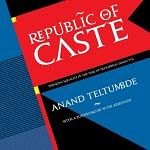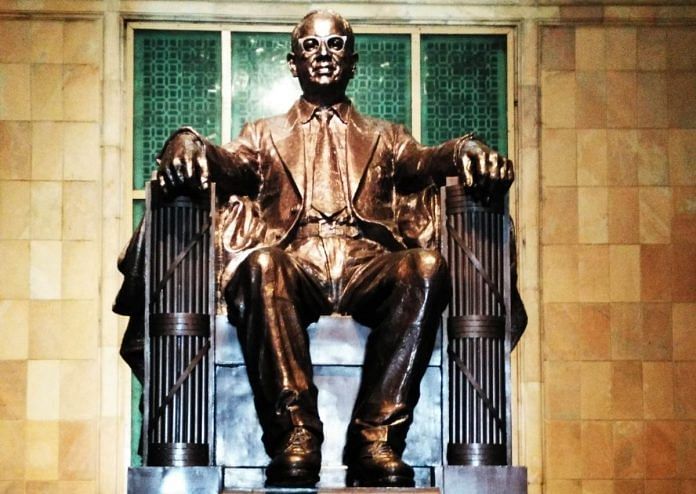Ambedkar knew the importance of land in the emancipation of dalits, but he also knew it would not be easy to secure it for them, writes Anand Teltumbde in a new book titled ‘Republic of Caste: Thinking Equality in the Time of Neoliberal Hindutva’.
ThePrint is publishing articles on Dalit issues as part of Dalit History Month.
The post-Una struggles in Gujarat have focused on land, and Bhanubhai Vanakar’s suicide in February 2018 brought the focus back on the issue. Anand Teltumbde looks back at the history of dalit-led struggles for land.
Given the demographic fact that dalits are predominantly rural—their rate of urbanisation being half that of the non-dalits—land plays a very important role in the schema of dalit liberation. Dalit social degradation is inextricably tied up with economic dependence on farmers of the dominant castes. This dependence was part of the hierarchical structure of autonomous village society. Dalits were meant to be the village servants, in exchange for which the village would offer them a bare subsistence. The dominant castes understood that if dalits came to own the means of survival, they would repudiate their servile status and its attendant social bondage.
Land spelt such a means of liberation. While it is true that a few dalits in certain parts of the country did possess land and considerable wealth but were nonetheless treated as untouchables, this does not refute the importance of owning land. Economic power does not automatically negate caste but the lack of it certainly accentuates it. Economic independence is an aspect of liberty and its absence, as a corollary, spells slavery. The prolonged neglect of economic factors by the dalit movement is one of the reasons for the pathetic state of dalits today, a neglect all the more surprising when we recall that economic factors brought the movement into being in the first place. While economic advancement is no guarantor of equality, it is nevertheless an indispensable resource for any struggle.
…
Although Ambedkar fully knew the importance of land in the emancipation of dalits, he also knew it would not be easy to secure it for them. His idea of state socialism presented a mere generalisation that made it still more difficult to achieve. It was one thing to give a vision of socialism to the Constitution, as he claimed having done in the Directive Principles of State Policy, but it was virtually unthinkable that such radical reforms might be instituted through a Constituent Assembly structurally representative of the elites and propertied classes. It would have been so in any constituent assembly however constituted.
This could only be achieved through a revolution, which Ambedkar thought impossible in India. He preferred representation as a means of advancement. His choice was informed by the pragmatism and Fabianism he had imbibed from his favourite professor at Columbia University, John Dewey, and again during his time at the London School of Economics, an institution established by the Fabian Society. The strategy postulated that if educated dalits occupied important positions in the state structure, they would influence state policy and gradually bring about revolutionary changes. This was why he emphasised higher education for the dalits and struggled for their representation in the power structure. Even within his lifetime, he was to witness the failure of this method.
In a remorseful moment during his last years, Ambedkar expressed regret on this score to the Marathwada unit of the Scheduled Castes Federation that visited him at his residence in Delhi. He said that whatever he had done benefited only educated dalits in urban areas, but he could do nothing for the vast majority of his rural brethren. He asked whether they would be able to launch a struggle for land.
On his return, B.S. Waghmare, the leader of the unit, undertook the first ever satyagraha to get fallow land transferred to landless dalits in Marathwada in 1953. For this momentous satyagraha in which 1,700 people courted arrest, he received help from Dadasaheb Gaikwad. In deference to Ambedkar’s wishes, two more land struggles were undertaken following his death, both under Gaikwad’s leadership: the first in 1959 in the Marathwada–Khandesh region of Maharashtra, and the second in 1964–65 all over India. The latter began on 6 December, the death anniversary of Ambedkar, with hundreds of people courting arrest daily over a month in Punjab, Madras, Mysore, Delhi, Gujarat, Uttar Pradesh and Maharashtra. Over 360,000 people were imprisoned by 30 January 1965.
The union government took serious note of this new turn of the dalit movement. So far, the dalit struggle had revolved around either the abstract issue of discrimination or of political representation, matters that could be addressed with token gestures by any ruling party. But if the dalits were to raise material issues demanding their share in resources, it would be difficult to contain without a structural overhaul. The Congress, representing the ruling classes, worked to co-opt dalit leaders, marking the beginning of the end of the dalit movement.
Never thereafter did the dalit leadership raise the land question, save for a flash in March 1983 when Prakash Ambedkar led a long march from Nashik to Mumbai with ‘land for landless’ as one of its demands. The Dalit Panther claimed its legacy and inspiration from the Maoist Black Panther Party of the United States, but before it could speak of class issues, it split over the issue of what Ambedkarism meant, the very issue which had split the RPI earlier. During the RPI split, Ambedkarism was identified with constitutionalism, and in the Dalit Panther split, with Buddhism. The only commonality between these splits was anti-Marxism, those evicted from either movement being charged with communist leanings.
By the 1970s, a new middle class began emerging among dalits, which found that it remained vulnerable to various kinds of discrimination. Contrary to Ambedkar’s expectations that this class would provide a protective cover for the dalit masses, it needed to form its own SC/ST employees’ associations to protect its interests. Designed to be apolitical and physically detached from the rural masses, it could only work in the cultural field: by building Buddha Viharas, vipassana centres, the promotion of congregational activity, etc. which distanced it further from the material issues of the dalit masses.
 This is an excerpt from Anand Teltumbde’s Republic of Caste: Thinking Equality in the Time of Neoliberal Hindutva, published by Navayana, available in bookstores by 1 May 2018. https://navayana.org/products/republic-of-caste/.
This is an excerpt from Anand Teltumbde’s Republic of Caste: Thinking Equality in the Time of Neoliberal Hindutva, published by Navayana, available in bookstores by 1 May 2018. https://navayana.org/products/republic-of-caste/.
Read more from ThePrint’s Dalit History Month archives.







There is a good opening now. Many of the land owners are giving up farming as they are not able to find workers. Government should move in a purchase land from them. Government should give these land for lease to the rural dalits. Once lease period ends they should have an option to buy the land for themselves. This will solve multiple problems.
We have too many people depending on the agri income. If you provide upward mobility to the rural landless labor then you are allowing upward mobility to whole country. By next generation unequality will be gone.